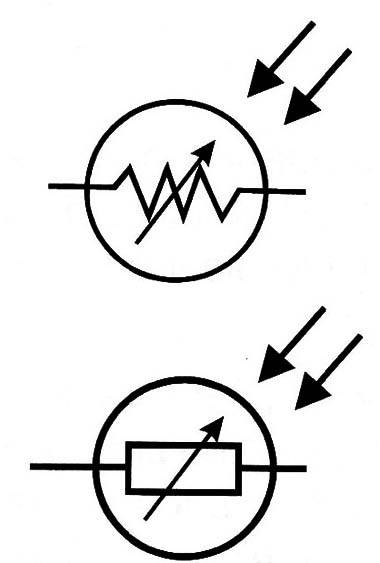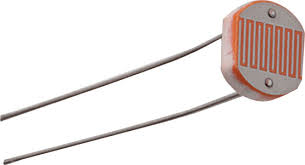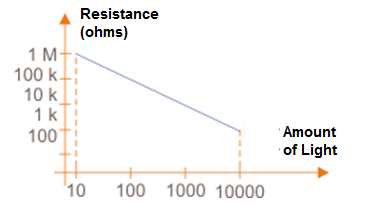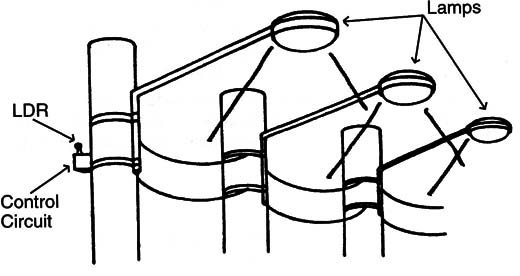The resistance between the terminals of these components fails when the amount of light falling onto a sensitive surface increases.
In the dark, the resistance is high and falls under the sunlight. The LDRs are used as light sensors in many electronic applications.
They are formed by a cadmium sulfide surface-the sensitive element of the device.
This surface and its base are placed inside a transparent plastic enclosure.
The size and the format of the device depend on the application.
Symbols and Type
Figure 1 shows the common symbols used to represent this component.


Specifications
The LDRs can by specified by the diameter (size) or by a manufacturer number.
When replacing LDRs, types of the same size are normally interchangeable.
The characteristic curve is also other important specification, Figure 3 show this curve for a common LDR.

Where they are found
The reader will find LDRs in many electric devices related to domestic applications.
They are used as sensors in alarms, automatic lights, emergency lights, and many other circuits.
In a typical application the LDR is placed in a way that it receives only the ambient light as shown in Figure 4.

When the light falls at dusk, the LDR’s resistance increases acting on the electronic circuit triggering a lamp.
If the LDR receives the lamp’s light a feedback process can interfere in the circuit.
Oscillations and instabilities can be induced this way.
Although the LDRs are very sensitive devices, they are not fast enough for certain applications and can only be used to control simple circuits from slow light changes.
When a fast action is needed, such as when reading bar codes or detecting fast changes of light, other devices are preferred like photodiodes and phototransistors.
In many applications the amount of light on the LDR or CdS cell can be increased with the use of a convergent lens. The use of a convergent lens, as shown in Figure 5, is important to help the device to detect light from smaller angles.

Testing
A simple multimeter (digital or analog) can be used to test any LDR.
Put the multimeter on a resistance scale and plug the probes into the LDR.
Passing your hand in front of it (to cut the ambient light falling in the sensitive surface) you’ll observe the resistance changes in the multimeter’s scale.
Figure 6 shows how to do this test.




